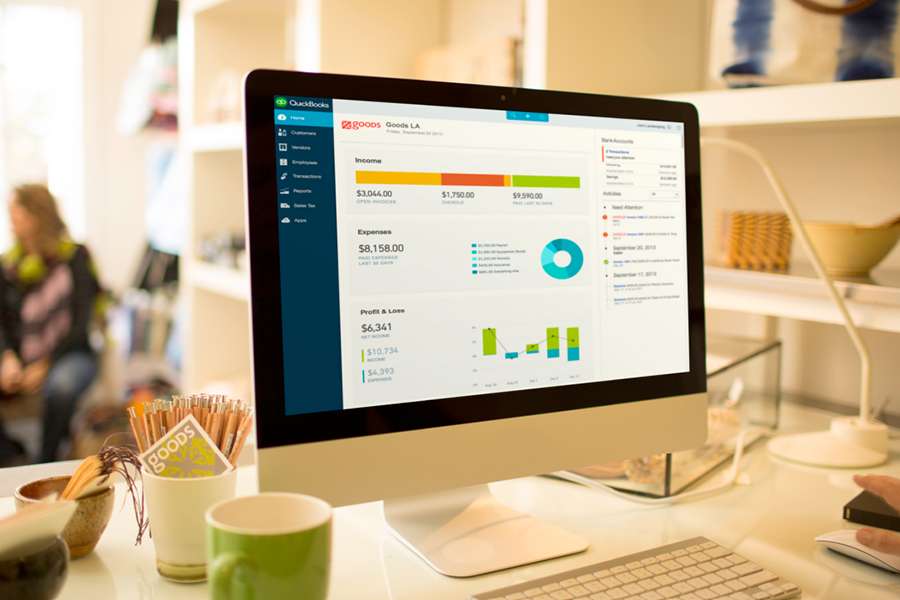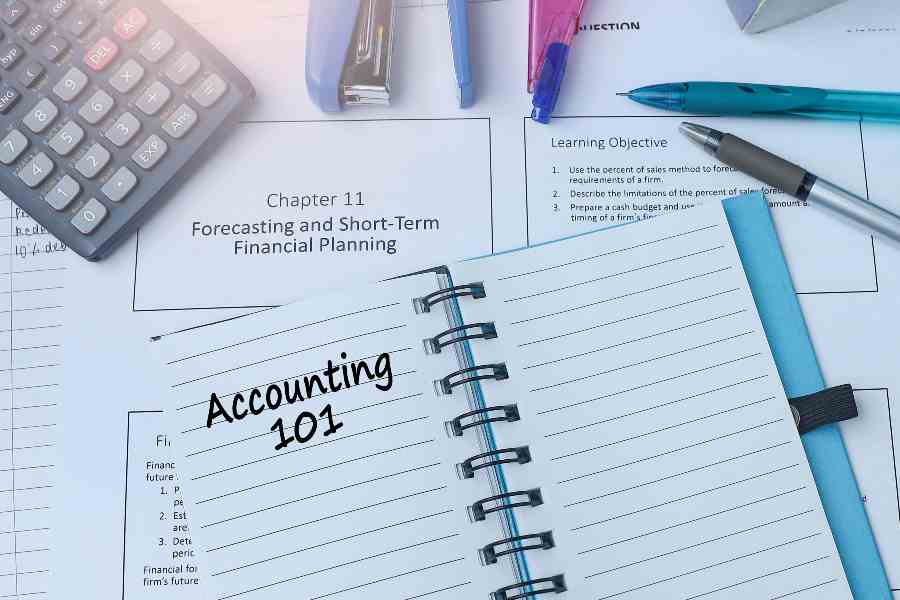A chart of accounts is one list of all of your company’s accounts. Similar to a filing cabinet for your company’s accounting system, it’s used to organize transactions into groups. In a chart of accounts, you’ll typically find an account number, account name, description, account balance, and account category. Account categories include assets, liabilities, equity, revenue, and expenses.
See our example for a better understanding of what’s included in a sole proprietorship’s chart of accounts.
Paul Cooper Plumbing Chart of Accounts | ||
|---|---|---|
Number | Account Description | Account Type |
1010 | Cash | Assets |
1020 | Petty Cash | Assets |
1030 | Checking | Assets |
1035 | Savings | Assets |
1040 | Accounts Receivable | Assets |
1050 | Machinery and Equipment | Assets |
1090 | Real Estate | Assets |
1100 | Prepaid Expenses | Assets |
2010 | Accounts Payable | Liabilities |
2030 | Loan Payable | Liabilities |
2100 | Line of Credit | Liabilities |
2200 | Taxes Payable | Liabilities |
2300 | Unearned Rent | Liabilities |
3010 | Owner’s Equity | Equity |
3020 | Owner Withdrawals | Equity |
3100 | Contributed Capital | Equity |
3200 | Retained Earnings | Equity |
4010 | Fees Earned | Revenue |
4100 | Service Revenue | Revenue |
4200 | Product Sales | Revenue |
5040 | Utilities | Expenses |
5050 | Postage and Delivery | Expenses |
5060 | Office Supplies | Expenses |
5080 | Marketing | Expenses |
5100 | Legal Expenses | Expenses |
5200 | Repairs & Maintenance | Expenses |
5300 | Auto Expenses | Expenses |
5400 | Dues and Subscriptions | Expenses |
5500 | Cleaning Expenses | Expenses |
5600 | Employee Payroll | Expenses |
5700 | Office Rent | Expenses |
5800 | Bank Fees | Expenses |
5900 | Equipment Rental | Expenses |
6020 | Insurance Settlement | Other Income |
6040 | Stock Sales Gains | Other Income |
7030 | Loss on Assets Sales | Other Expenses |
7050 | Investment Expenses | Other Expenses |
Types of Accounts to Include on Your Chart of Accounts
The main account types include assets, liabilities, equity, revenue, and expenses. These are described in more detail below.
Assets
An asset is a resource that a company controls to run and grow its business. Asset accounts typically start with 1 in the numbering system.
Assets are divided into two categories: current and fixed assets.
- Current assets can be thought of as short-term assets, which are necessary for a company’s immediate needs.
- Noncurrent, or fixed, assets are longer-term, as they have a useful life of longer than a year.
Liabilities
Liabilities in accounting are what a company owes or has borrowed, usually a sum of money. They can include a future service owed to others or a previous transaction that created an unsettled obligation. Liability accounts typically start with 2 in the numbering system.
Similar to assets, liabilities are classified as current and noncurrent.
- Current liabilities are expected to be concluded within 12 months or less.
- Noncurrent liabilities are long-term or greater than 12 months.
Owner’s Equity
Owner’s equity is the owner’s rights to the assets of the business or what’s left over after subtracting the liabilities from the assets. It includes money invested by the owner of the business plus the profits of the business since its inception. If you subtract the money taken out of the business by the owner and money owed to others, you’ll be left with the owner’s equity amount. Equity accounts typically start with 3 in the numbering system.
The owner’s equity accounts to include vary based on the entity type.
- A sole proprietor should have the following:
- Contributed capital
- Retained earnings
- Owner withdrawals (or draws)
2. A partnership or an LLC should have:
- A separate equity account for each partner, such as “Pat Doe, Capital.”
- Partnerships don’t include
- withdrawal accounts because partner distributions are removed directly from the partner’s capital account; and
- a retained earnings account as net income at the end of the year is distributed to the capital accounts
3. Corporations (C Corporation and S Corporation) should include the following:
- Common stock
- Preferred stock
- Additional paid-in capital
- Retained earnings
Revenue
Revenue is the money generated from normal business operations and essentially whatever you collect from your customers prior to deducting any costs. Exclude nonoperating income, such as interest, in your revenue accounts. Revenue accounts typically start with 4 in the numbering system.
A sample of revenue accounts to include are:
- Service revenue
- Product sales
Expenses
An expense is a cost incurred by a business in its operations to produce revenues. Expense accounts typically start with 5 in the numbering system. You should exclude accounts for nonoperating expenses and losses with your expenses but include:
- Wages expense
- Rent expense
- Tax expense
Other Income
Other income refers to income earned outside of the normal way that you do business. Some accounts to include are:
-
- Gain on the sale of an asset
- Insurance settlement
- Gain on a stock sale
- Rent from a building you own
Other Expenses
This refers to expenses that are outside of your normal operating activity. An account you should include is the loss on a sale of an asset.
Sample Numbering System
With a chart of accounts numbering system, each account is allocated a code depending on the complexity of the business and the amount of detail required from its financial reporting system. The purpose of the numbering system is to group similar accounts to provide an easy method of remembering and referring to an account when preparing journal entries.
For a small business without the need to develop departmental or location information, a four-digit chart of accounts numbering system can be used. For example, the following ranges might be allocated:
Account | Code |
|---|---|
Assets | 1000–1999 |
Liabilities | 2000–2999 |
Owner’s Equity | 3000–3999 |
Revenue | 4000–4999 |
Expenses | 5000–5999 |
Other Income | 6000–6999 |
Other Expenses | 7000–7999 |
Within each range are sub-categories for each account. For example, the office supplies expense might be assigned the code 5600 or a credit card liability the code 2200.
Adding Department or Location Codes
If your company has multiple departments or locations, you can distinguish them by appending a two-digit code to the end of the four-digit number. For example, you can assign different departments the following codes:
- -10 Accounting
- -20 Administrative
- -30 HR
- -40 Sales & Marketing
Assume supplies expense has an account number of 5200. Supplies purchased by the accounting department would be recorded in accounting number 5200-10, while those by HR would go to account 5200-30.
Why Is the Chart of Accounts Important?
The chart of accounts is important because it allows you to organize your company’s financial data and distill it into clear and logical categories. It’s also the foundation for financial reports—having all your financial data in one place and seeing how the different accounts relate to one another can provide important insights into your company’s performance.
It can also help you with:
- Filing taxes: A properly organized chart of accounts will simplify your tax season by grouping income and expenses into the items that require separate listing on the tax return.
- Separating expenses: An effective chart of accounts will provide a separate expense account for each type of expense you wish to track. Avoid combining different expenses into a single account as this will decrease the usefulness of your accounting reports.
- Organization and structure: A chart of accounts provides a systematic framework for categorizing all financial transactions, ensuring consistency and accuracy in recording. The hierarchical structure makes it easy to locate and understand the relationship between different accounts.
- Financial reporting: The chart of accounts serves as the basis for generating financial statements like the balance sheet and income statement. This provides insights into a company’s financial health and performance.
- Analysis and decision-making: The chart of accounts provides a detailed breakdown of financial data, which allows for in-depth analysis of revenue streams, expenses, asset allocation, and liabilities. This information lets you make informed decisions regarding resource allocation, budgeting, and strategic planning.
- Efficiency and automation: The use of accounting software leverages the chart of accounts to streamline processes like transaction recording, account reconciliation, and report generation. The consistent account structure allows for automation and integration with other financial systems, reducing manual effort and improving efficiency.
Best Practices for Maintaining an Accurate Chart of Accounts
There are a few best practices that can be adopted to maintain an accurate chart of accounts.
Frequently Asked Questions (FAQs)
A chart of accounts is a comprehensive, organized list of all the financial accounts a company uses to record its financial transactions. It serves as the backbone of its accounting system, providing a framework for tracking and categorizing every financial activity.
The five main categories in the chart of accounts are assets, liabilities, equity, revenue, and expenses. These categories correspond to the major sections of financial statements (balance sheet and income statement).
You have the option of assigning each account in the chart of accounts its own unique number, which helps with easy identification and reference. The chart of accounts numbering system can be structured to reflect the account category and subcategories.
You can start by establishing major account categories, such as 1000 to 1999 for Assets, 2000 to 2999 for Liabilities, and 3000-3999 for Equity. Then, create subcategories if desired, such as Current Assets (1100-1199) and Fixed Assets (1200-1299). Within each subcategory, assign specific numbers to individual accounts, like Cash (1100) and Accounts Receivable (1110).
Yes, a chart of accounts can be tailored to the specific needs and industry of a company, with additional accounts or subaccounts created as needed.
Bottom Line
The chart of accounts is designed to be a map of your business and its various financial parts. A well-designed chart of accounts should separate all the company’s most important accounts and make it easy to determine which transactions should be recorded in which account. You can also use a numbering system to group similar accounts and provide further details with classification.


